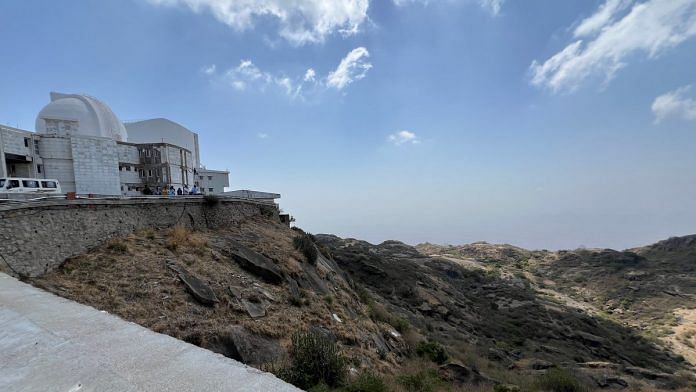Mount Abu: Five white domes, increasing in size from left to right, jut out of the rocks at Guru Shikhar peak in Rajasthan. Off-limits for the hordes of tourists who throng Mount Abu every year, these mysterious structures are explained away by local residents as a government site for alien research. The reality, in fact, is not far off.
At the domestically built Mount Abu Infrared Observatory, path-breaking astronomy discoveries are underway. Five telescopes of various sizes, housed within the domes, come alive at night, scanning minuscule patches of the sky at a stretch. The two biggest instruments have a specific mission — looking for exoplanets, or planets that orbit stars outside the solar system.
Just a couple of months ago, the team discovered an exoplanet with the help of the facility’s newest 2.5-metre primary mirror telescope — its crown jewel. They’re waiting for their findings to finish undergoing peer review for publication in the journal Astronomy & Astrophysics.
This massive telescope, the largest of the five, boasts a state-of-the-art, made-in-India spectrograph called PARAS-2 (PRL Advanced Radial velocity Abu Sky Search). This instrument, which analyses light from celestial bodies, happens to be the most precise and highest resolution spectrograph in Asia. Within a year since it became operational in 2023, the team was able to zoom in on the planet.
“Using our older telescope, our astronomers have already discovered three exoplanets. Now with PARAS-2, which is its elder brother, we have discovered yet another one. We also use these to study the solar system and its various features, and also comets, novae and supernovae, blazars, and other phenomena,” said Anil Bhardwaj, director of the Physical Research Laboratory (PRL), which runs the Mount Abu Infrared Observatory.
While ISRO builds satellites and probes to launch into space, PRL’s scientists, under India’s Department of Space, study the data from these missions to understand bodies within and beyond our solar system.
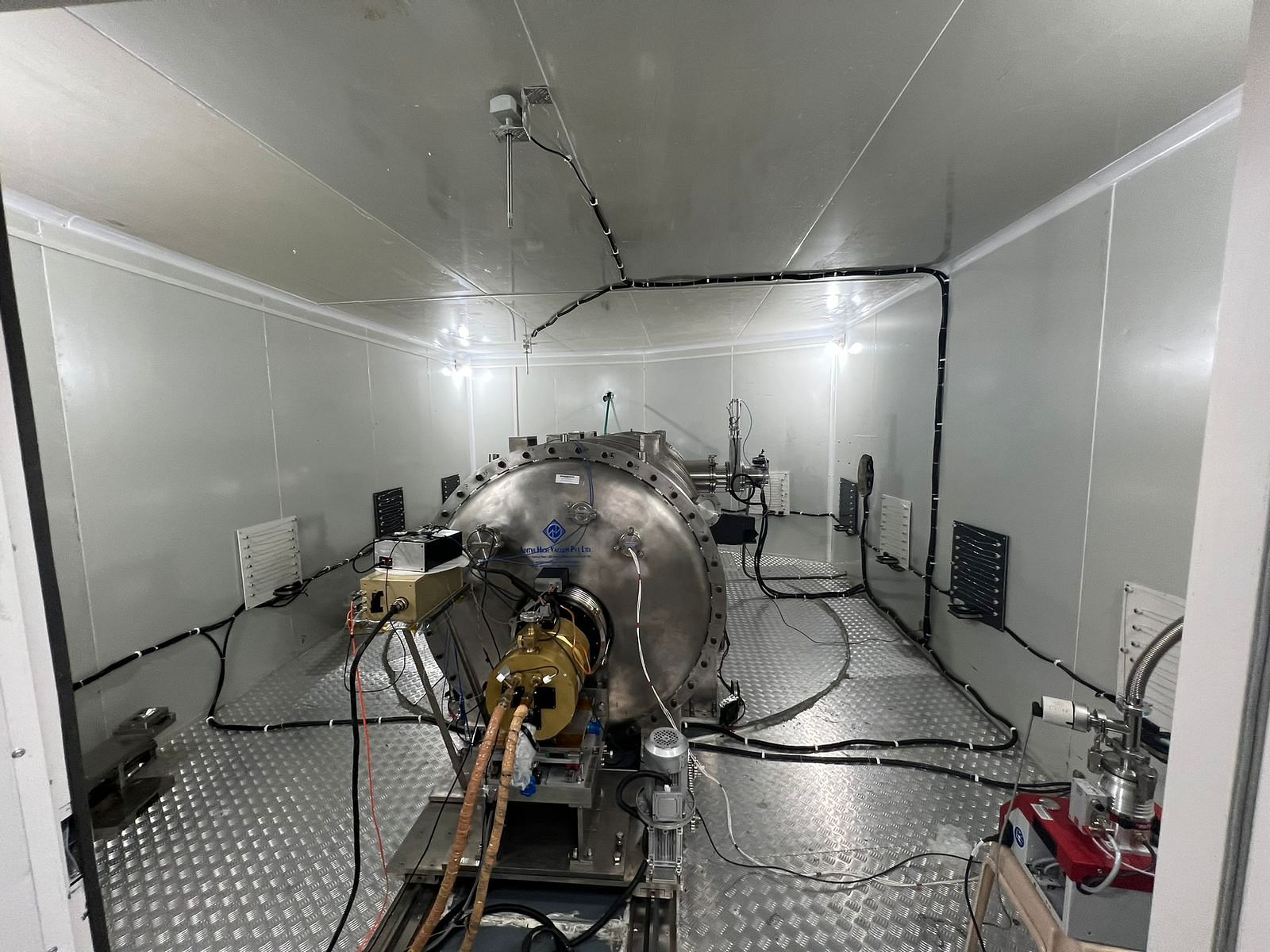
At PRL’s Mount Abu campus, the giant instrument and its four companions are anchored into monolithic granite formations. A small team of young scientists conduct trailblazing research here under the night sky, in the middle of wilderness roamed by leopards and bears.
“All our capabilities are currently getting enhanced by a factor of ten, which means we will be able to look at extremely faint objects. Our aim is now to go down in size to find planets similar to Earth and those in habitable zones,” said Bhardwaj.
PARAS-2 has already made the confirmed discovery of a sub-Saturn exoplanet, TOI-6651b. Now, exoplanets smaller than Neptune (sub-Neptune) and larger than Earth (super-Earth) are expected to be discovered.
Also Read: Sriharikota, we have a problem. The ground is eroding
Hunting for planets
At Mount Abu, the team working on the new PARAS-2 telescope is looking precisely for such exoplanets — those that are similar in mass to Earth.
With its sibling PARAS-1, they discovered more massive planets that were comparable to the mass of Jupiter — TOI-1789b in 2021 and TOI-4603b last year. Called hot-Jupiters, these are a class of gas exoplanets that are physically similar to Jupiter but with shorter orbital periods. Previously, in 2018, the astronomers had also found a planet similar to Saturn’s mass (sub-Saturn) — K2-236b, India’s first exoplanet discovery.
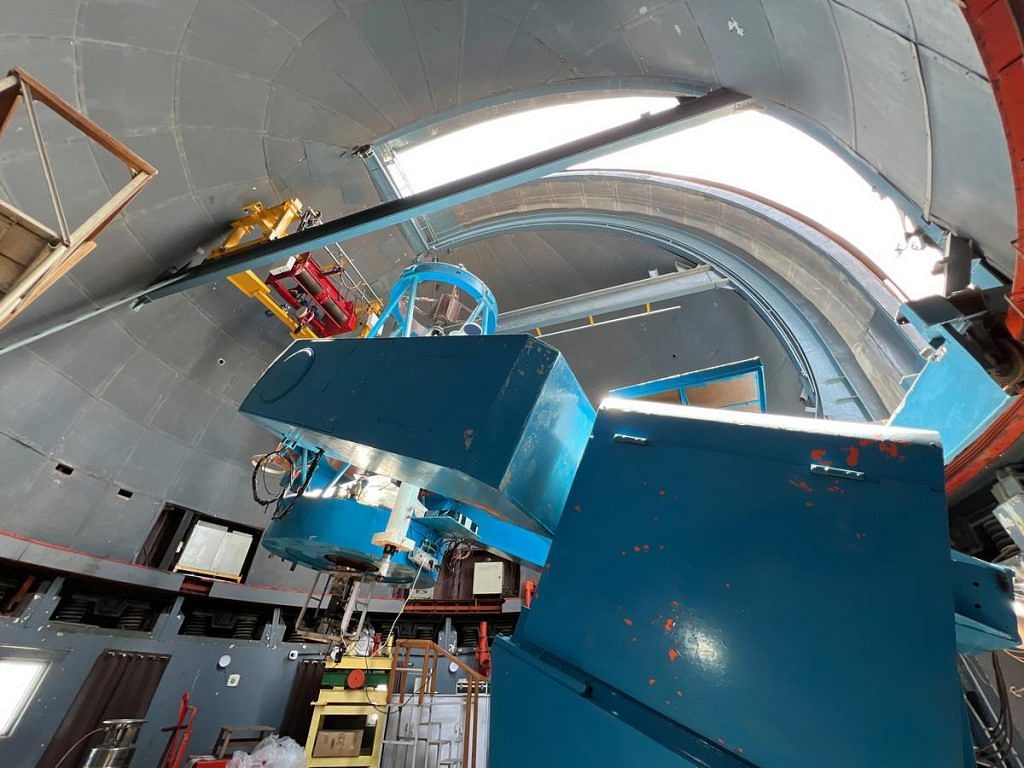
Now, with PARAS-2, the focus is on uncovering less massive planets. These would likely be smaller than Neptune (sub-Neptune) and larger than Earth (super-Earth). Their search has already yielded the confirmed discovery of a sub-Saturn exoplanet, TOI-6651b.
This is still a new frontier, with astronomers venturing into exploring exoplanets only in the last three decades. For a long time, astronomers generally believed there weren’t many planets outside our solar system compared to the number of stars. Then came the first confirmation of an exoplanet by the Arecibo Observatory in Puerto Rico in 1992. Around the same time, telescopes like Hubble, launched into space in 1990, revealed countless galaxies, each teeming with stars — nearly all with their own planets.
The objective now is to find a planet similar to Earth, and eventually one that can harbour life. And India has joined the hunt.
The key method being used in this search for elusive planets is what is called the radial velocity technique.
“The radial velocity method relies on the principle that two astronomical bodies exerting gravitational pull are actually orbiting each other around a common centre of gravity. For a star and a planet, this point tends to be near or inside the star. The planet goes around the star, but the star itself merely wobbles,” said Abhijeet Chakraborty, head of astronomy at PRL. This wobble can be detected, allowing astronomers to calculate the mass of an invisible planet orbiting a star.
(PARAS-2) has a sensitivity of 50 cm per second. We are only one of five telescopes in the world with such a precise spectrograph
-Abhijeet Chakraborty, head of astronomy, PRL
It was Chakraborty who started the exoplanet research programme at Mount Abu in 2008 after his post-doctoral studies in the US.
The PARAS-1 spectrograph, which is attached to a 30-year-old 1.2m telescope, was his brainchild. It was the first of its kind in India and one of the top six precise spectrographic instruments in the world. Observations began in late 2013, and in 2018, the telescope made India’s first exoplanet discovery.
These promising results led the Department of Space to fund the newer 2.5m telescope in 2018, along with the PARAS-2 spectrograph, to make more precise measurements and look for smaller, Earth-mass planets.
PARAS-2 is lightyears ahead of PARAS-1, which can detect a planet-induced wobble on a star with a sensitivity of 1 metre or 100 cm per second.
“Our instrument has a sensitivity of 50 cm per second,” said Chakraborty. “We are only one of five telescopes in the world with such a precise spectrograph.”
Light from the telescope travels through fibre-optic cables to a spectrograph located one floor below. Much like a prism, the spectrograph breaks down the light from a star into its spectrum. By zooming in on these different wavelengths, a wealth of information can be gleaned about the star that emits the light and the immediate environment through which the light passes.
“The entire data is fibre-fed, which is how the spectrograph obtains light from the telescope,” said Nikitha Jithendran, the 27-year-old engineer who built the software for speckle interferometry, a method similar to calculating the Doppler effect but for light.
Her screen displays 10-12 horizontal parallel stripes of light— data being obtained from stars under observation.
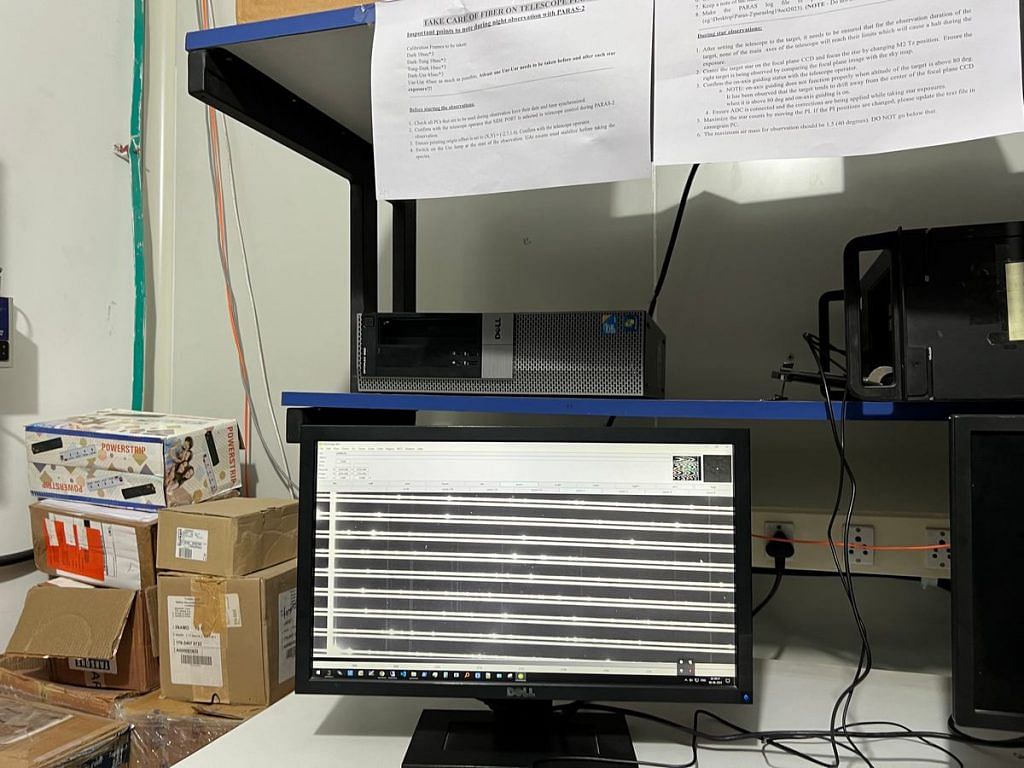
Star targets aren’t hunted or guessed by the Mt Abu telescopes themselves. Instead, other telescopes identify “candidate” exoplanets, which are then observed and analysed. When a team confirms the presence of a planet, they receive credit for the discovery.
Illustrating how the team works with its data, Jithendran compared zoomed-in versions of individual spectral lines from a far-away star, pointing out the different wavelengths of light obtained. These, she said, are calibrated against control signals. The data itself is collected over mere milliseconds every day and then compared.
“These small dips in brightness on a line are called absorption bands,” she said, adding that these appear because as light travels from the star, certain wavelengths are absorbed by the gases and metals surrounding it. “This tells us the elemental composition of the star and the environment around it.”
The scientists at the observatory are striving to further enhance the sensitivity of PARAS-2, pushing the boundaries to get closer to Earth-mass readings.
The facility
On a hot, dry Sunday morning, a lone chameleon basks on a smooth, granite rock. In the distance behind the lizard, a small white stone temple sits on top of a hill. The wind sometimes carries the murmur of prayers from devotees as they turn towards the restricted Guru Shikhar peak with its white domes and telescopes.
At the facility, a different kind of cosmic conversation plays out. Sophisticated equipment observes wavelengths beyond human vision, detecting electromagnetic emissions from distant sources. Giant mirrors within the telescopes, housed in large buildings, capture data from a tiny sliver of the sky.
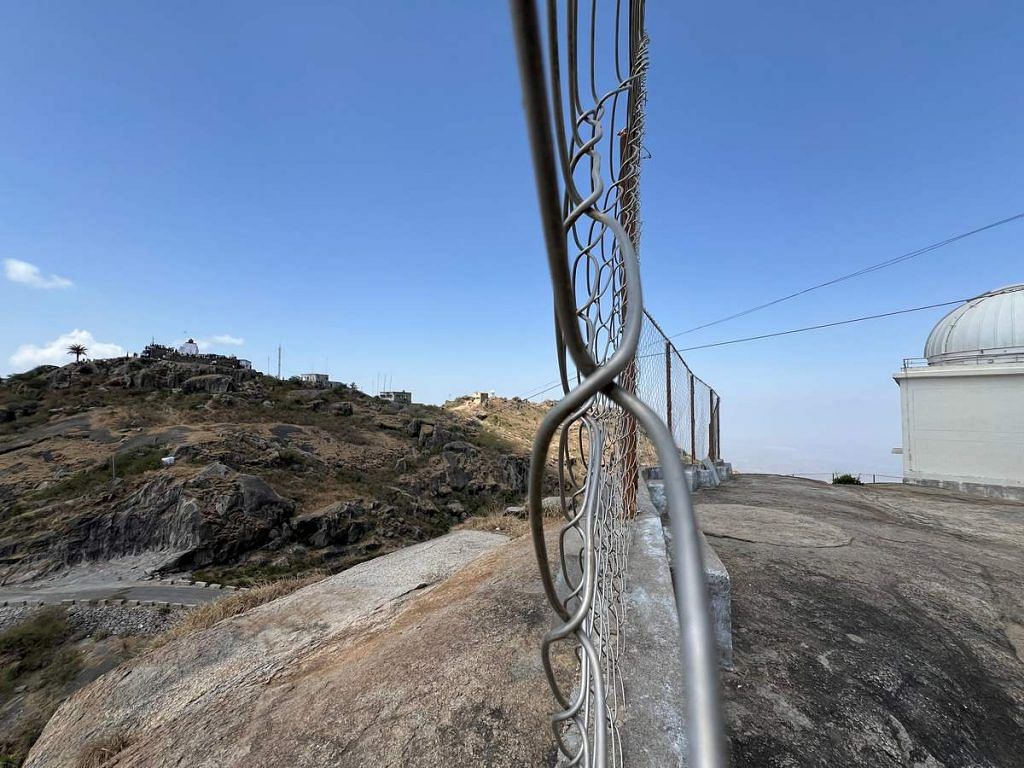
Earthly access to the observatory involves a climb up the peak within the Mount Abu Wildlife Reserve. Sightings of bears rummaging through litter left behind by tourists are common here.
Leopards, around 150 species of high-altitude birds, and other animals also inhabit this area, sharing the space with the facility’s 10 students; 10 faculty members, engineers, and telescope operators; and five permanent employees, apart from rotating staff members.
The Mount Abu observatory opens with the smallest telescope sitting on a grassy lawn. A tiny dome encloses this 43cm telescope, with crawl-in access. It allows 3-4 adults to stand inside, but only when the dome is open.
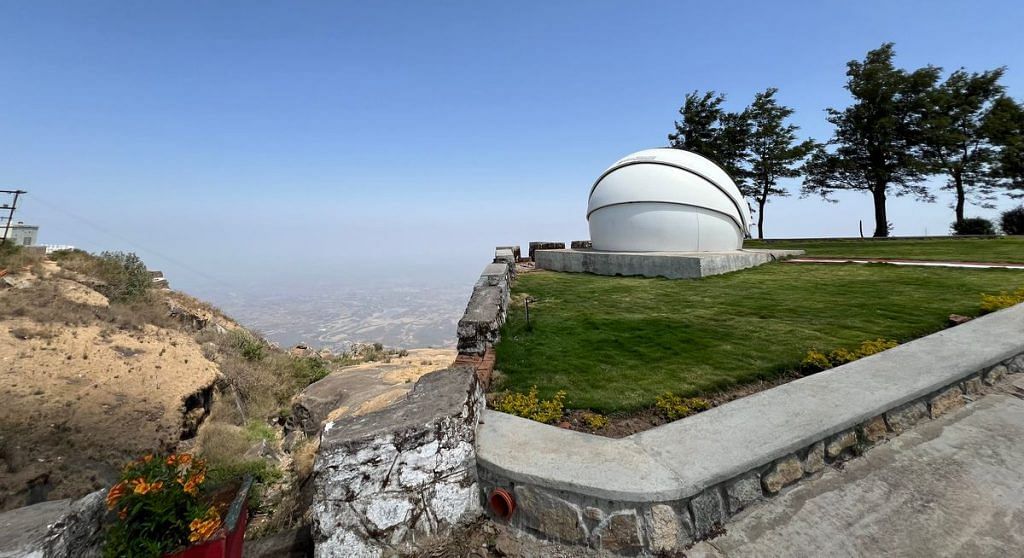
The other telescopes are housed in their own buildings, and are drilled into the granite underneath. The newest one is shielded by a rounded shell rather than a dome, unlike the other four. All stand out against the rocky background thanks to their stark white exteriors, which reflect heat.
The PARAS-fitted high performers of the facility are the blue 1.2m telescope, built by ISRO in the early 1990s, and the 2.5m telescope, built jointly by PRL and Belgium’s Advanced Mechanical and Optical Systems (AMOS) during the Covid-19 pandemic under Make In India. Connected with the latter telescope, PARAS-2 is the only domestically built spectrograph in the country that is this powerful.
Through management and technology, we are improving automation so researchers can focus on science. Our advantage is having many young, motivated students
–Sunil Chandra, professor of extragalactic astrophysics
Workers are busy finishing the outer layers of the 2.5m telescope’s building, covering it with scaffolding and breaking occasionally from work for chai with the faculty and students. Although the telescope began operating in 2023, the building’s official inauguration ceremony is slated for later this year, with expected visits from high-profile government representatives and academics.
The telescope is mounted on a huge platform resembling the unlit interior of a closed movie set. It is only illuminated with natural light when the outer structure is opened, allowing sunlight to come in through a slit that expands slowly from the ground through the wall and the roof. During the day, this usually occurs when maintenance work is being done.
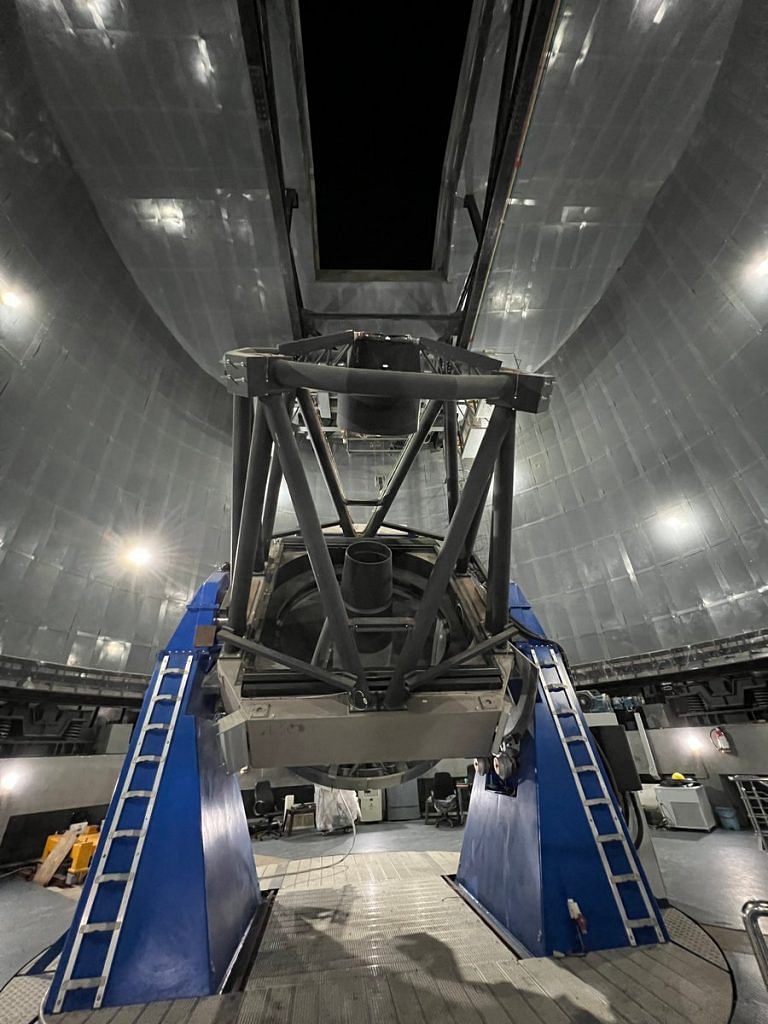
The outer structure rotates about 10 feet off the ground on an inverted railway track, with wheels fixed to the ground. The entire outer shell of the behemoth building circles upon this track.
The star of the show, the telescope itself, sits right in the middle, and almost looks like the inner skeleton of a typical telescope.
Apart from looking for exoplanets, the telescope’s scientific objectives include studying transient phenomena such as supernovae and black holes, as well as sources of energy emissions in galaxies.
The gigantic structure consists of a pier that rotates a turntable, forming the telescope’s base and spanning two additional floors below. On top of it sit support structures with two mirrors that collect light at the very top, facing the roof.
These heavy mirrors are supported by actuators — piston-like structures that produce thrust to keep the mirror suspended in empty space, buffering it from potential shocks caused by contact with the physical structure.
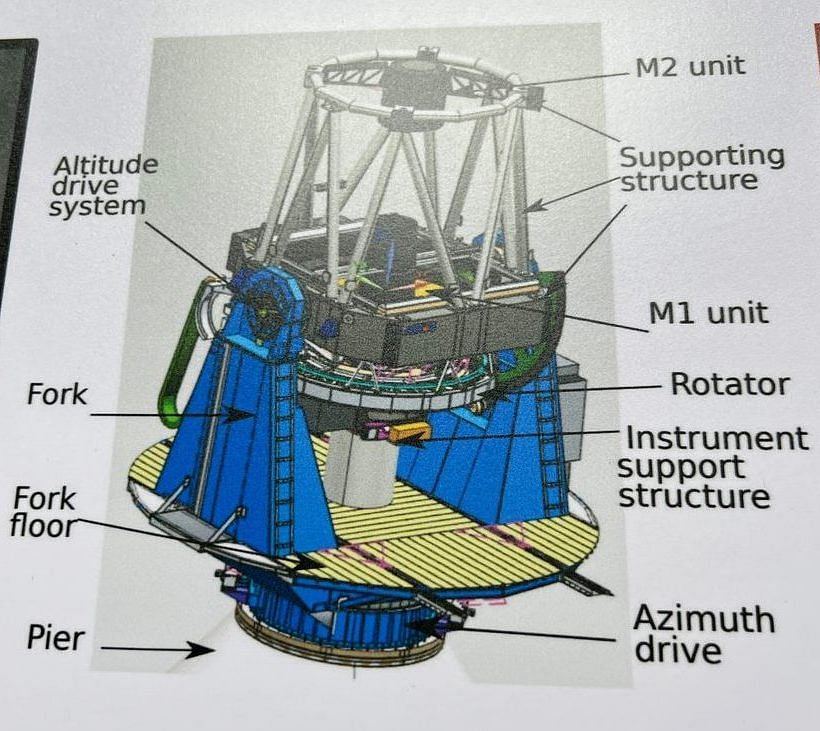
The whole telescope rotates 360 degrees and can tilt and pivot, enabling the team to point it at any part of the sky. When the telescope gazes at a point to observe a star, it looks at a mere sliver of 2 arc-seconds, or 2/3600th of a degree in space. This data is fed to the spectrograph below through cables routed through a black box (a Cassegrain reflector) attached to the telescope.
“When studying tiny changes, in centimetres, in the star’s wobble, the spectrograph needs to be extremely stable. Factors like atmospheric pressure changes or vibrations from human activity can affect precision. So, we’ve placed the whole instrument in a vacuum chamber at the required low temperatures,” said Chakraborty.
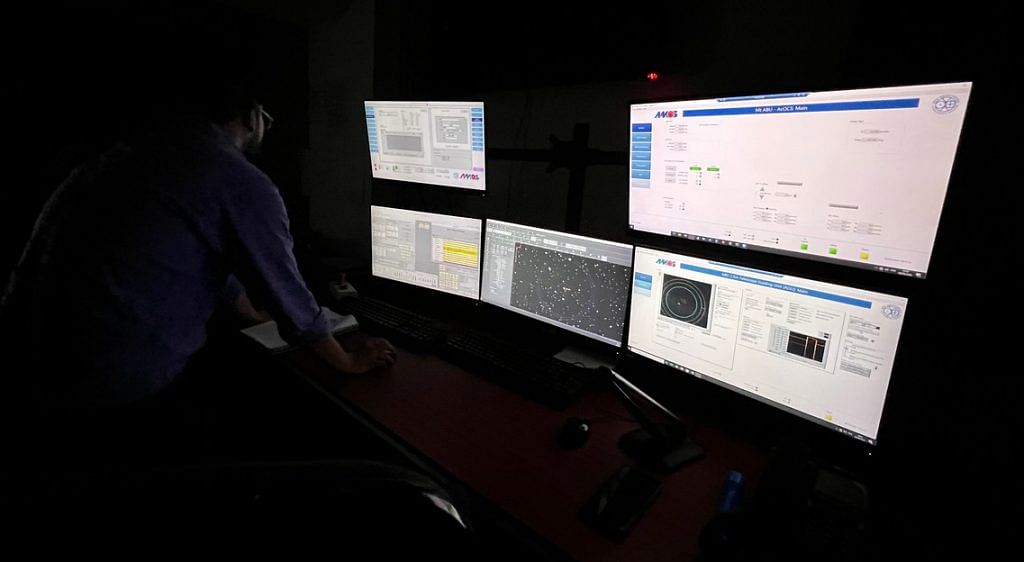
Apart from looking for exoplanets, the telescope’s scientific objectives include studying transient phenomena such as supernovae and black holes, as well as sources of energy emissions in galaxies. For these purposes, other instruments are attached to the telescope — the FOC (faint object camera) for detailed observations of transient phenomena, a speckle imager for exoplanet observations, and the LRS (low-resolution spectroscopy) for early classification and follow-up of transient phenomena.
Maintaining the telescope is a complex undertaking as well. During infrared observations, cooling is required. Liquid nitrogen, produced in-house at two plants right on campus, fulfill this need. There are also two aluminising plants where specialised equipment is used to maintain the coating of the telescope mirrors.
“In most facilities, the aluminium vapour comes from the side and coats the mirror. In our case, it comes from above,” said mechanical engineer Vivek Mishra. While this method is typically avoided due to the risk of molten aluminium falling down and damaging the mirror, it is better suited for this particular telescope.
“In our case, our mirror is very thin. So, we have our machines equipped with technology to make vertical aluminising safe, and this makes the process more efficient overall. This is one of the first such machines in India,” Mishra added.
The mirrors are moved to and from the telescope with the help of cranes that airlift them through the outer dome shell. Outside both telescopes is a walkway around the dome that allows for a complete visual reference for those inside. During the day, it provides a clear view of the weather and of small towns around Sirohi dotting the mountainous landscape.
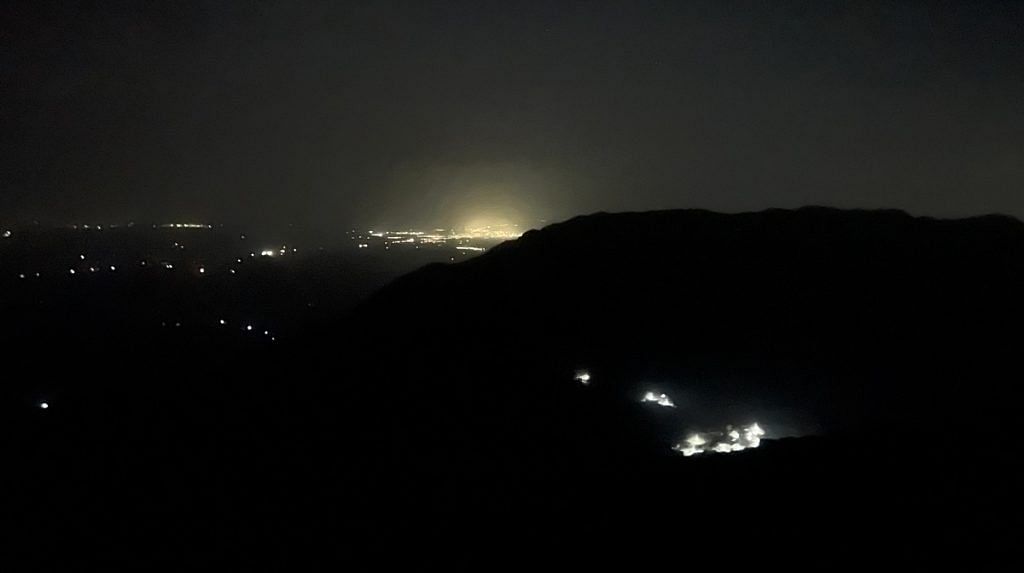
At night, these transform into dots of light as the approaching monsoon brings thunderclouds over distant spots, spitting lightning — like a distant Mordor with the all-seeing eye of Sauron from Tolkien’s universe.
Also Read: Pune astronomers identify galaxy in Milky Way’s neighbourhood as ‘explosive factory’ of gamma rays
Higher aims
The research at PRL’s Mount Abu’s facility is led by a small team of faculty members, supported by a contingent of scientists and engineers, most of whom are in their early 20s. Those stationed here commute daily from a town about 40 minutes away.
“We have lots of resources in the form of students at various levels of expertise. We run four large facilities, but (the others have) only a handful of students and researchers,” said Sunil Chandra, a professor of extragalactic astrophysics who studies blazars, black holes, and other high-energy phenomena.
Since April, Chandra has been working on improving the telescope’s efficiency, building on his recent experience with the HESS telescope in South Africa.
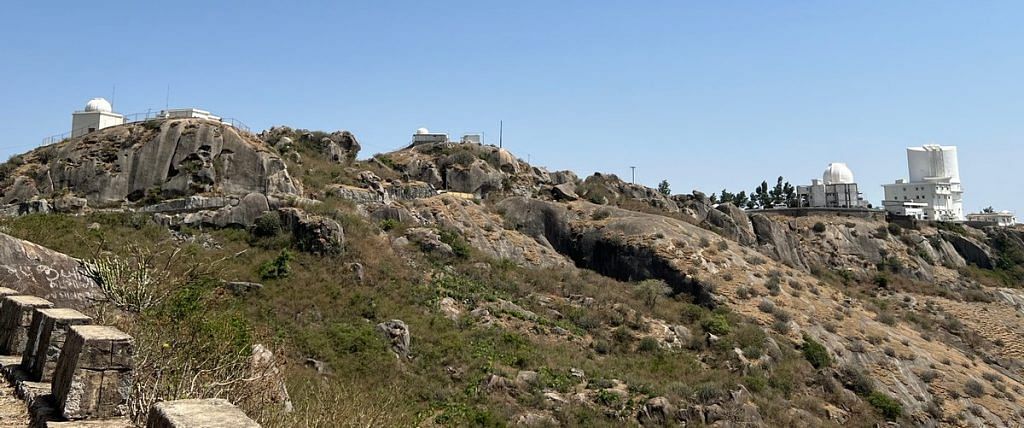
“Through management and technology, we are improving automation so researchers can focus on science. Our advantage is having many young, motivated students,” he added.
Indeed, the students played an important role in getting the 2.5m telescope up and running. The engineers persevered through the 2020 lockdown, completing construction while much of the world was cocooned.
Now, Chandra’s team is in a race against time to make the telescope as technologically advanced and automated as possible.
“My short-term vision is to make the 2.5m telescope and PARAS-2 completely robotic so that anybody across the world can submit requests over the internet. Those will then be automatically scheduled optimally, and the telescope will observe itself without human intervention, and also send data to the user,” he added.
The ongoing work doesn’t stop there. The scientists at the observatory are striving to further enhance the sensitivity of PARAS-2, pushing the boundaries to get closer to Earth-mass readings.
As part of this process, the team is seeking to recruit new researchers and attract more student talent, many of whom today come from the Indian Institute of Space Technology (IIST).
On a Sunday night in June, students and researchers gather around the 2.5m telescope, abuzz about its latest observations — a powerful jet of energy, called a blazar, pointing at Earth and beaming high energy photons from 1.4million parsecs away. The facility will be shut for at least four months during the monsoon, but the team is already making plans for their return in October. They’re all fired up to make their spectrograph instruments even more sensitive and powerful by the end of the year.
“We are upgrading the spectrographic sensitivity from 50cm to almost 20cm, and that should also happen by December,” said Chakraborty. When it does, it will be one giant leap toward the next big discovery.
(Edited by Asavari Singh)



